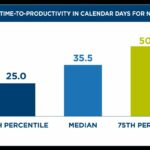Unlocking the power of data analytics has become a transformative force in almost every facet of the business world. From providing valuable insights to assisting in decision-making processes, analytics has proven to be an indispensable tool for companies seeking to gain a competitive edge. Yet, one area where the potential of analytics remains largely untapped is in the realm of outplacement strategy. Picture this: a world where data-driven practices meet compassionate and effective career transitions. In this article, we will explore how leveraging analytics can revolutionize outplacement strategies, allowing organizations to guide their employees towards brighter professional horizons while maximizing their own success. So, buckle up and prepare to dive headfirst into the realm of analytics-driven outplacement strategy – an innovation that promises to transform the way we navigate the turbulent waters of career transitions.
1. Uncovering Insights: Unleashing the Power of Analytics in Outplacement Strategies
In the rapidly changing landscape of the workforce, understanding the power of analytics in outplacement strategies can provide a competitive advantage to organizations navigating employee transitions. Gone are the days of relying solely on traditional approaches, as data-driven insights have emerged as a vital tool in facilitating successful transitions and optimizing resources. By harnessing the potential of analytics, companies can uncover valuable information that guides decision-making and ignites positive change.
Analytics brings a wealth of benefits to outplacement strategies, allowing organizations to identify trends, anticipate challenges, and tailor support to individual employee needs. By analyzing vast amounts of data, such as labor market trends, job demand, and skills gaps, companies gain a comprehensive understanding of the job market and can provide targeted guidance to employees. Moreover, analytics help identify transferable skills, facilitating the alignment of displaced employees with available opportunities. This enhances their chances of securing new roles quickly and efficiently, minimizing the impact on both the individual and the organization.
- Enhanced decision-making: Analytics provides organizations with data-backed insights that inform decisions and strategies related to outplacement, minimizing the risk of making uninformed choices.
- Cost optimization: By leveraging analytics, companies can identify cost-saving opportunities and allocate resources effectively, ensuring the most efficient use of budget during difficult transitions.
- Improved employee experience: With analytics, organizations can personalize outplacement programs to match employee needs, ensuring a supportive and positive experience during a challenging time.
Embracing analytics in outplacement strategies opens new avenues for success and growth. The ability to uncover hidden insights, leverage data-driven decision-making, and provide tailored support empowers organizations to navigate transitions with confidence, resilience, and compassion.
2. Unleashing the Data Goldmine: How Analytics Can Transform Outplacement Success Rates
Analytics has become an integral tool in the modern business world, offering valuable insights and driving informed decision-making. But how can analytics be leveraged to transform outplacement success rates? The answer lies in the vast amount of data available within organizations. By harnessing this data goldmine, outplacement agencies can unlock a wealth of information that can revolutionize their approach to assisting displaced employees in finding new opportunities.
With analytics, outplacement agencies can:
- Analyze job market trends: By dissecting hiring patterns and industry movements, agencies can gain a deeper understanding of the current job market landscape. This insight allows them to provide tailored guidance to individuals, matching their skills with the most in-demand positions.
- Identify skills gaps: Through data analysis, outplacement agencies can identify areas where employees may have skill gaps and provide them with appropriate training or resources to bridge those gaps. This proactive approach empowers individuals to enhance their skillsets, making them more marketable in their job search.
- Track job search progress: Analytics allows agencies to monitor and track the progress of displaced employees as they navigate the job market. By analyzing factors such as application success rates and interview-to-hire ratios, agencies can provide personalized guidance to improve candidates’ chances of securing employment.
By embracing analytics, outplacement agencies can tap into the power of data to increase their effectiveness and improve success rates. By combining data-driven insights with personalized guidance, individuals facing job loss can find new opportunities faster, ultimately achieving a more successful transformation in their careers.
3. Empowering Transitions: Harnessing Analytics to Optimize Outplacement Effectiveness
In today’s fast-paced job market, the importance of effective outplacement services cannot be overstated. Replacing one job with another is a daunting task for both employees and employers. However, by harnessing the power of analytics, organizations can empower successful transitions and optimize the effectiveness of their outplacement programs.
Analytics provide valuable insights into the job market, enabling organizations to stay ahead of trends and make informed decisions. By leveraging these tools, employers can identify the in-demand skills and industries, thus assisting displaced employees in aligning their expertise with market needs. Furthermore, analytics ensure personalized outplacement support, as they help to identify specific job opportunities tailored to an individual’s skill set, experience, and interests. By streamlining the job search process, analytics help to maximize an employee’s chances of finding suitable employment, ultimately reducing time spent in transition and minimizing the financial impact on individuals and organizations alike.
4. The Smarter Path to Reemployment: Revolutionizing Outplacement with Analytics
If you’re in the process of searching for a new job, it’s time to revolutionize your approach to outplacement by leveraging the power of analytics. In today’s rapidly changing job market, it’s essential to stay ahead of the competition, and analytics can provide valuable insights to help you make smarter decisions throughout your reemployment journey.
By harnessing the potential of analytics, you can gain a deeper understanding of your industry’s trends, demand for specific skills, and even identify emerging job roles and opportunities. Armed with this knowledge, you can tailor your job search strategy to focus on high-demand areas, increasing your chances of landing a desirable position. Additionally, analytics can help you refine your resume and enhance your personal brand by identifying keywords, skills, and experiences that are most valued by potential employers. This data-driven approach empowers you to stand out from the crowd and present yourself as an ideal candidate.
As we conclude this journey into the world of leveraging analytics to enhance your outplacement strategy, we can’t help but marvel at the endless possibilities that lie ahead. Through the power of data, organizations can now navigate the delicate intricacies of outplacement with unparalleled precision and effectiveness.
In this ever-evolving digital landscape, analytics has emerged as an invaluable tool, offering a compass guiding us through the labyrinth of career transitions. By harnessing the insights garnered from massive volumes of information, new pathways are discovered, giving rise to innovative and transformative strategies.
With each piece of data meticulously analyzed, recruiters and HR professionals can tap into the untapped potential of their outplacement programs. From identifying skill gaps and industry trends to anticipating workforce needs and cultivating a resilient workplace culture, analytics grants us the power to shape the future of outplacement.
The seamless integration of human expertise and analytics has unlocked a new era of personalization and individualized support. As we bid adieu to the old-fashioned “one-size-fits-all” approach, we welcome a future where each employee is nurtured with tailored guidance, maximizing their chances of successfully navigating the tumultuous waters of job loss.
But let us not forget that behind the data, there are real people with real dreams, hopes, and fears. This technology-driven transformation must always be rooted in compassion and empathy, for it is at the intersection of human connection and data-driven insights that true success lies.
So, as we embark on this remarkable journey, we invite you to reimagine the outplacement landscape. Embrace the power of analytics, wield it as your ally, and let it amplify the impact of your outplacement programs. By embracing this fusion of art and science, we can forge a future where every talent displaced finds their path to new opportunities, renewed purpose, and ultimately, professional triumph.
Discover the transformative power of data and elevate your outplacement strategy, for the possibilities are only limited by our imagination. Step into the analytics-driven era and pave the way for a future where outplacement transcends boundaries, paves new trails, and empowers individuals to rise from the ashes of career setbacks.








